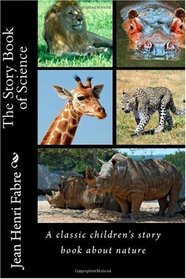Search -
The Story Book of Science
The Story Book of Science
Author:
Originally published in 1917, "The Story Book of Science" is a detailed children's story book about nature. "Uncle Paul" teaches his niece and nephews about nature with a passion and zeal rarely seen in science books. Each of the 80 chapters in the book illustrates some new truth about nature from a godly perspective, and serves as a launching... more »
Author:
Originally published in 1917, "The Story Book of Science" is a detailed children's story book about nature. "Uncle Paul" teaches his niece and nephews about nature with a passion and zeal rarely seen in science books. Each of the 80 chapters in the book illustrates some new truth about nature from a godly perspective, and serves as a launching... more »
ISBN-13: 9781451501230
ISBN-10: 1451501234
Publication Date: 2/17/2010
Pages: 254
Rating: ?
ISBN-10: 1451501234
Publication Date: 2/17/2010
Pages: 254
Rating: ?
0 stars, based on 0 rating
Genres:




